2016-02-21
Bart Ehrman-Michael Bird Debate & Comments on Mythicism

Musings on biblical studies, politics, religion, ethics, human nature, tidbits from science
Mostly straightforward but still some questions arise. Where does New Testament end and Church history and question of Christian origins, also certain roles of Marcion, begin? (Marcion’s argued influence on NT should be included here; also evidence of early readings found in Fathers like Tertullian.) Relevant manuscript discoveries and analysis belong here, including histories of their later copying.


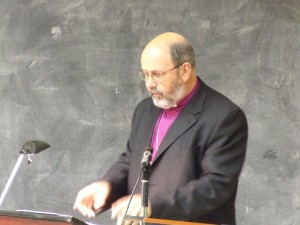
Larry Hurtado has roused blogospheric attention with his adverse evaluation of the N.T. Wright’s unconventional interpretation of what the early Church believed about the “second coming” of Jesus.
The Bishop of Durham has broached the idea before but Hurtado’s criticism his directed towards the relatively recent (2013) Paul and the Faithfulness of God. Wright contends that Paul’s teaching that God’s Spirit dwelt in the Church as his Temple could only mean one thing among Jews of Second Temple days: God had returned to dwell on earth with his people. God’s Temple was once again filled with the Glory of God. God, YHWH, had returned to his people in Jesus who was vindicated after the resurrection and that same YHWH now shed his glory on earth in the lives of the saints. Christ is the first to be resurrected and the rest of his brethren will be raised at his final appearance from heaven (the parousia). The (extended) day of that resurrection is now, but God’s promise to return to his people and dwell among them was fulfilled when he came in Jesus and continues now that he lives in his earthly temple, the church. This final event is merely seen as the completion of the renewal that has begun with Christ’s resurrection. Thus there is no “second” coming: God has fulfilled his promise to come to live with his people now.
Hurtado will have none of it. Christians (like Hurtado) are still waiting for the second coming just as Paul really taught their original generation. So deep is this belief furrowed into the mind of the conservative scholar that any contrary view must be bereft of all supporting evidence.
My own piece is a critical study of Wright’s claim that the earthly ministry of Jesus was seen from the first as YHWH’s “return to Zion,” . . . .
I judge his claims faulty, unsupported by the evidence.
Hurtado maintains that the long promised return of YHWH to Zion will be fulfilled in the second coming of Jesus. It was not fulfilled in his first visit. Continue reading “Hurting: Can Wright Be Right This Time?”

It is an abuse of one’s status as a public intellectual to write dogmatic apologetics for lay readers. Professor Brant Pitre cobbles together a grab-bag of rationalisations to promote Catholic dogma and presents it to his lay readers as a work based on superior scholarship. The title of this post might have as well have begun with “Betrayal of lay readers” as “Failure of scholarship”.
Take the second chapter of The Case for Jesus: The Biblical and Historical Evidence for Christ as but one example. After having earlier stressed the importance of understanding the Gospels in their Jewish context, Pitre in this chapter abandons that Jewish context and flips to a non-Jewish Greco-Roman context, resorts to anachronisms, fallacious rhetorical arguments and some misleading statements about the manuscript evidence to pummel the lay reader into “just knowing” that our canonical gospels were composed as we read them today, complete with their author names, Matthew, Mark, Luke and John, heading each one. The book could be ignored as another Catholic tract if it were not for his academic peers — some of whom have been known to react with indignation if one dares suggest they are not objectively engaged in intellectually honest pursuits — publicly complimenting the work.
In seeking to reassure faithful readers that the Gospels were not originally written anonymously Pitre time-warps out of his “spiritually enlightening” Jewish context of the previous chapter and appeals to modern Western reading preferences:
Imagine for a moment that you’re browsing the shelves of your local bookstore, and you come across two biographies of Pope Francis. One of them is written by a longtime friend and contemporary of the pope. The other biography is anonymous. Which one would you buy? Most people, I would venture to guess, would go for the one written by someone who had actually spent time with him, someone who was a friend of Jorge Bergoglio, the man who later became pope. At the same time, I think most people would also view the anonymous biography with some level of suspicion. Who wrote this? Where did they get their information? Why should I trust that they know what they’re talking about? And if they want to be believed, why didn’t they put their name on the book?
Pitre, Brant (2016-02-02). The Case for Jesus: The Biblical and Historical Evidence for Christ (p. 12). The Crown Publishing Group. Kindle Edition.
Scholars who argue the contrary (which, incidentally, would probably be most critical scholars) do so because of religious prejudice, because they do not want to believe in the Jesus in the Gospels, according to Pitre. The lay believer is led to think of critical scholars as hostile to his or her faith and to be dismissed as some sort of enemy of the truth:
The theory [of the anonymous Gospels] is remarkably widespread among scholars and non-scholars alike. It is especially emphasized by those who wish to cast doubts on the historical reliability of the portrait of Jesus in the four Gospels.
Pitre, Brant (2016-02-02). The Case for Jesus: The Biblical and Historical Evidence for Christ (p. 16). The Crown Publishing Group. Kindle Edition.
I’ll dwell upon the anachronistic analogy and the convenient abandonment of the Jewish context of Brant’s argument in this post.
Pitre explains:
[T]he Gospels are a form of ancient Greco-Roman biography. As experts in ancient biography have pointed out, “authors of biographies… normally were named.” Craig S. Keener, The Gospel of Matthew: A Socio-Rhetorical Commentary (Grand Rapids, MI: Eerdmans, 2009), 40. Moreover, one of the standard “opening features” of an ancient Greco-Roman biography was ordinarily some kind of “title.” Richard Burridge, What Are the Gospels?, 156– 57. These titles sometimes identify the author in the third person (see, e.g., Josephus, Life of Josephus; Tacitus’s Agricola; Diogenes Laertius, Lives of Eminent Philosophers). This makes perfect sense, since when it comes to biography, the reader will want to know who is giving the account of the subject’s life, and how they got their information.
Pitre, Brant (2016-02-02). The Case for Jesus: The Biblical and Historical Evidence for Christ (p. 207). The Crown Publishing Group. Kindle Edition.
Has Pitre read beyond the works of fellow apologists like Craig Keener and Richard Bauckham in his investigations into this question? Nowhere in his bibliography or index does one find reference to the 2008 article in the reputable journal Novum Testamentum 50:2 120-142 by Armin D. Baum, The Anonymity of the New Testament History Books: A Stylistic Device in the Context of Greco-Roman and Ancient Near Eastern Literature. Professor Baum’s article actually offers Pitre, Bauckham, Keener and others a way to consistently evaluate the Gospels without sacrificing their Jewish context. But that would also mean stepping away from what modern readers might look for in a biography and accepting that the gospels just might have been originally anonymous after all.
Begin with the abstract of Baum’s article:
The anonymity of the NT historical books should not be regarded as peculiar to early Christian literature nor should it be interpreted in the context of Greco-Roman historiography. The striking fact that the NT Gospels and Acts do not mention their authors’ names has its literary counterpart in the anonymity of the OT history books, whereas OT anonymity itself is rooted in the literary conventions of the Ancient Near East. Just as in the OT, where the authors of books that belonged to the genre of wisdom and prophetic literature were usually named while historical works were written anonymously, only the NT letters and the Apocalypse were published under their authors’ names while the narrative literature of the NT remained anonymous. The authorial intent of the Gospels’ anonymity can also be deduced from its ancient Near Eastern and OT background. Unlike the Greek or Roman historian who, among other things, wanted to earn praise and glory for his literary achievements from both his contemporaries and posterity, the history writer in the Ancient Near East sought to disappear as much as possible behind the material he presented and to become its invisible mouthpiece. By adopting the stylistic device of anonymity from OT historiography the Evangelists of the NT implied that they regarded themselves as comparatively insignificant mediators of a subject matter that deserved the full attention of the readers. The anonymity of the Gospels is thus rooted in a deep conviction concerning the ultimate priority of their subject matter.
Three New Testament historical works, Luke, Acts and John, contain prologues, the literary place-marker where one would most expect to find a reference to the author’s identity. But no,
Whenever New Testament narrators address their readers, whether in the first person or in some other way they consistently remain anonymous. (p. 122)
It is in the prologues of Greco-Roman history that we normally find the author’s name.
The absence of a prologue was usually considered as a departure from long established standards. Therefore, Lucian could write disapprovingly:
There are historians who “produce bodies without any heads?works lacking an introduction that begin at once with the narrative.”
Thus, the Jewish historian Josephus prefixed elaborate prologues to his Bellum Judaicum and to his Antiquitates because he did not want his works to appear, in the eyes of his educated Hellenistic audience, like headless bodies.
The same applied to Greco-Roman biography:
Greco-Roman biographies were published under the names of their authors (Euripides, Isocrates, Lucian, Philo, Plutarch, Suetonius etc.) as well. Only the lives that belong to the genre of popular literature (1st to 4th century A.D.) were an exception: the Vita Aesopi the Vita Alexandri Magni (later ascribed to Callisthenes), the somewhat more sophisticated narrative Lucius seu asinus and the Vita Secundi philosophi. These biographies have not only a rather low and episodic style but also anonymity in common. (pp. 126f.)
After surveying the range of ancient biographies and histories Baum concludes:
On the basis of these observations we may conclude: If a Hellenistic historian did not mention his name in (the prologue of) his work, he deviated from an ancient and widespread literary convention. (p. 127)
Baum then compares Old Testament and other Jewish historiography: Continue reading “Why the Anonymous Gospels? Failure of Scholarship in Pitre’s The Case for Jesus“

Let’s get this thing out of the way. Here are some of the “highlights” of Brant Pitre’s new book, The Case for Jesus, supporting some of my criticisms in the previous post. More may follow. (I’ve only covered chapter one in this post.)
If Brant Pitre kept his book from the view of his academic peers and treated it as nothing more than a pastoral interest that was quite separate from his intellectual responsibilities as a scholar, no problem. What should be offensive to us is the fact that a constellation of scholarly authorities have muttered sweet scented somethings about it. These authorities otherwise claim to be serious scholars who never let their theological biases influence their work. But by treating The Case of Jesus as a worthy contribution for scholarly consideration (despite being primarily addressed to lay readers) they declare their true interests.
Note first of all a fundamental point that I do agree with (I do in fact agree with a number of Pitre’s observations and analyses but not the tendentious conclusions he draws from them):
Christianity is a historical religion which claims that the God who made the universe actually became a man — a real human being who lived in a particular time and in a particular place. As a result, the idea of searching for the historical truth about Jesus made sense to me. (p. 2)
Continue reading “Highlights from Brant Pitre’s The Case for Jesus“

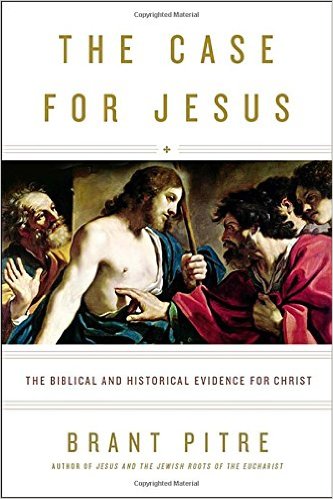 A few pebbles dropped (by Michael Bird, James McGrath, Anthony Le Donne and Brant Pitre) into the pond of bible studies blogs alerting me to a new book by Brant Pitre, Professor of Sacred Scripture at Notre Dame Seminary in New Orleans. Brant Pitre recently joined The Jesus Blog as a regular contributor alongside James Crossley, Anthony Le Donne, Chris Keith, Christine Jacobi and most recently Rafael Rodríguez. The new book is “not written for scholars” (p. 10) but the blurb recommendations do assure us that
A few pebbles dropped (by Michael Bird, James McGrath, Anthony Le Donne and Brant Pitre) into the pond of bible studies blogs alerting me to a new book by Brant Pitre, Professor of Sacred Scripture at Notre Dame Seminary in New Orleans. Brant Pitre recently joined The Jesus Blog as a regular contributor alongside James Crossley, Anthony Le Donne, Chris Keith, Christine Jacobi and most recently Rafael Rodríguez. The new book is “not written for scholars” (p. 10) but the blurb recommendations do assure us that
So scholarly book-lover that I am I grabbed a copy and started reading. I could not put it down. I’m normally a slow reader of scholarly books, taking time to check and follow up footnotes, backtracking to be sure I am registering the flow of argument, etc. But I finished The Case for Jesus: The Biblical and Historical Evidence for Christ all within a few hours.
The experience reminded me of delving into books published by my old religious cult many years ago, proving decisively and with impeccable logic and thorough research that the Bible really was the word of God, genuine scholarship proved that fact, and all modern scholarship that cast doubts on this was under the sway of the stubborn minds who refused to read the evidence seriously and foolishly relegated the Gospels to folklore and fairy tales. Form criticism was likened to the folly of that favourite juvenile Telephone Game that only works because the players don’t take the message they are asked to relay seriously and make up any old thing as they pass it along.
Now there’s nothing wrong with having a difference of opinion, or interpretation of the evidence. But a scholar surely has a responsibility to treat lay readers with enough respect to keep them informed of where his or her views sit in relation to those of his or her peers. I once asked a linguist about a particular theory of the nature of language and he began his response with, “Well, it depends who you ask….” He did not give me his own view as if it was “the truth”. He told me a range of views and the basic reasons for each and then gave his own. That’s how a scholar shows a lay person respect.
It’s not like that among some biblical scholars. Some of them, like Brant Pitre, take the opportunity to deliver a propaganda message and try to convert you to their belief system. Along they way they invite you to scoff at other scholars who disagree. They are write dogmatically, fanning dogmatism among readers. Continue reading “Scholars Doing Over Lay Readers with Apologetics”

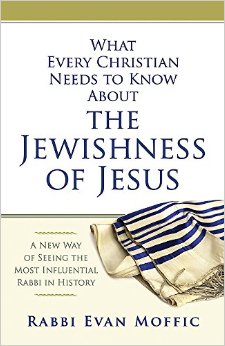 Jesus and Jews have not always got along well together in Christian scholarship but today (and for some decades now, especially since Geza Vermes published Jesus the Jew) they have been rollicking along just fine. So close are they that some scholars have been known to censure anyone who attributes to Jesus Hellenistic tropes of “latent anti-semitism”.
Jesus and Jews have not always got along well together in Christian scholarship but today (and for some decades now, especially since Geza Vermes published Jesus the Jew) they have been rollicking along just fine. So close are they that some scholars have been known to censure anyone who attributes to Jesus Hellenistic tropes of “latent anti-semitism”.
Scholars like April DeConick and Louis Painchaud have suggested that the modern tend to find some good in Judas is an outgrowth of a powerful cultural need to absolve our collective guilt over the treatment of the Jews in the wake of World War 2 and the Holocaust and the widespread anti-Semitism preceding those years. Both scholars argue that the National Geographic presentation of the Gospel of Judas portrayed Judas as a hero as a result of wishful and tendentious translations the text. Both argue that in fact the Gospel of Judas by no means presents him as a would-be saint.
But back to Jesus. Of course Jesus was a Jew. But traditionally many Christians have been taught to think of him as opposing what was essential Judaism of his day, that is, the self-righteous, legalistic and judgmental Pharisees. That concept has probably historically fed in to waves of antisemitism throughout history.
Now I fully agree that that traditional perception of Judaism is a misplaced caricature, the product of hostile Christian invention. That that simplistic notion has been replaced by more nuanced reality in the scholarly literature is a good thing.
But does the emphasis on the Jewishness of Jesus also indicate that Christian scholars are working outside the zone of their natural Christian biases? By no longer claiming Jesus “for themselves” and by implication as having no part with Judaism, are Christian scholars necessarily working towards a more neutral scholarly venture?
I think not. The reason is a new book I came across, What every Christian needs to know about the Jewishness of Jesus : a new way of seeing the most influential rabbi in history by Rabbi Evan Moffic.
Notice this passage from the Foreword to the book by Kent Dobson, Teaching Pastor at Mars Hill Bible Church:
And discovering a Jewish Jesus is not just an academic exercise; it has widespread implications for the health of Christianity. In some sense, we cannot claim Jesus as our own anymore. He was Jewish, we need to hear him in his own Jewish context, and we need to hear from Jewish voices about how they read this rabbi from Galilee.
Personally, I learned more from my Jewish brothers and sisters about Jesus and his world than I ever learned in church. . . .
I believe we are better people of faith when we bring our experience into a real conversation with those from other faith perspectives and convictions. The Jewish-Christian dialogue is not a politically correct game. We are conversing about meaning and truth, beauty and love, family and forgiveness, and the mystery of God. What could be better! . . .
Jewish perspectives on Jesus clarify, strengthen, and take further some Christian convictions about his mission, teaching, and life. . . .
This new era of Jewish-Christian dialogue is just dawning. In some sense, it’s still very fragile. It started in academia and now is spilling out into the Synagogue and the Church.
Moffic, Rabbi Evan (2016-02-02). What Every Christian Needs to Know About the Jewishness of Jesus: A New Way of Seeing the Most Influential Rabbi in History (Kindle Locations 62-83). Abingdon Press. Kindle Edition.

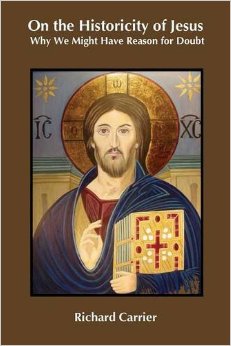 It’s more of a few notes or a “book write up” than a review per se. PhD candidate and Bible scholar James Pate has posted Book Write-Up: On the Historicity of Jesus, by Richard Carrier on his blog James’ Ramblings. He explains the purpose of his brief notes:
It’s more of a few notes or a “book write up” than a review per se. PhD candidate and Bible scholar James Pate has posted Book Write-Up: On the Historicity of Jesus, by Richard Carrier on his blog James’ Ramblings. He explains the purpose of his brief notes:
I would like to wrestle with some of Carrier’s arguments. This post will not be comprehensive, but it will wrestle with key points that Carrier makes in his book.
Unfortunately what I missed from the “key points” that follow was an acknowledgement of the central methodology and case made by Richard Carrier. What troubles James Pate more appear to be some of the old chestnuts that I thought Carrier had addressed, but evidently not to the satisfaction of James. But credit where credit is due: James Pate does not engage in subtle or overt innuendo, put-down, and cavalier dismissal of Carrier as some other reviewers have done. Nor does he engage in outright distortion of the arguments. [There is one point made by James Pate that is incorrect, however, and I addressed this in a comment below.]
I suspect the limitations of Pate’s post are really the outcome of simply wanting to jot down notes of some key questions that a reading of Carrier’s book failed to dispel rather than write a formal review. We ought not be faulted for not doing what we did not set out to do. So I would like to think that Pate’s points should provide a good spring-board for further discussion and an opening into the wider arguments presented by Carrier.
Pate’s first point:
A. Carrier does ask good questions. . . .
Pate lists several of them. Of course Carrier does more than simply ask such questions: he raises such questions in the context of probabilities against the relevant background knowledge of Christianity and its wider cultural matrix. Potentially fruitful discussion topics here.
B. On why first century extra-biblical sources fail to mention Jesus, many would respond that they would not mention a backwater Galilean peasant. . . .
C. . . . . Carrier notes that so many extrabiblical sources fail to mention Christianity. . . . Why did so many first century sources fail to mention Christianity? Was it because Christianity was obscure, or not well-established yet, or kept to itself?
Continue reading “Another review of Richard Carrier’s On the Historicity of Jesus“

H/t a BCHF thread: A book due out in a few months from now, The Madness of King Jesus: The Real Reasons for His Execution by Justin Meggitt. 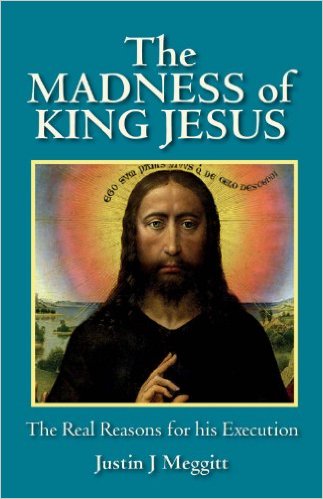
Given the understanding that the crucifixion of Jesus is “one of the most secure facts” we have in history Justin Meggitt tackles one of the perplexing conundrums that the crucifixion has left us: why did Pilate crucify Jesus yet not lift a finger against his followers, even allowing them to continue preaching about Jesus after his execution?
Some of us will be familiar with Paula Fredriksen’s answer to this question in Jesus of Nazareth, King of the Jews. Fredriksen’s argument is that Pilate knew Jesus was harmless — he had, according to the Gospel of John, travelled to Jerusalem for several years running where he preached quite harmlessly. For some reason on that last journey, however, the crowd got out of hand in their response to his preaching about the coming kingdom, and Pilate needed to nip in the bud early signs of trouble. Jesus was the one they were agitated over, so a quick crucifixion solved the problem. The disciples were of no account according to this equation.
Meggitt explains his confidence in the historicity of the crucifixion on page 380:
These points (based on criteria of authenticity; an ideologically framed chronology; and the appeal to incredulity) are virtual mantras that are too rarely seriously questioned.
Another scholar, Fernando Bermejo-Rubio, in a 2013 article in the Journal for the Study of the New Testament, “(Why) Was Jesus the Galilean Crucified Alone? Solving a False Conundrum”, resolves the dilemma by denying that Jesus was crucified alone but was indeed crucified with followers:
The view that those crucified with Jesus had nothing to do with him is not only exceedingly improbable from a historical standpoint, but it uncritically relies upon the story told in biased sources: only the theological necessity to distance Jesus from any rebellious connection can account for the tenacity with which this view is held.
Meggitt proposes a different solution. The book is not yet published but he has had an article on the same theme published in the same journal in 2007 (JSNT 29.4: 379-413), “The Madness of King Jesus: Why was Jesus Put to Death, but his Followers were not?” The abstract:
To argue that Jesus of Nazareth was put to death by the Roman authorities because they believed him to be a royal pretender of some kind, fails to explain satisfactorily why he was killed but his followers were not. A possible solution to this conundrum, which is supported by neglected contextual data, is that the Romans thought Jesus of Nazareth to be a deranged and deluded lunatic.
The first part of the article outlines the evidence that it was standard practice for Roman rulers to pursue and execute followers of would-be insurrectionists along with their leaders. Continue reading “The Madness of King Jesus”

It’s been a long time since I’ve addressed any of James McGrath’s regular little swipes at mythicism but it’s a dreary rainy Sunday morning and I’m in a mood for nostalgia.
The following has just popped up on my rss feed: The Real Difference Between Creationism and Mythicism. The point McGrath drives home is set out twice, once in a colourful box illustrated with a silly creationist trope of a man with his pet dinosaur:
Creationists can find 3,000 academics who will sign a statement against evolution. That’s not 3,000 academics in relevant fields, just 3,000 academics, including retired ones. I’ve yet to see mythicism show any sign of even coming close to that. And yet supposedly we are to believe that creationism’s 3,000 are irrelevant, but the 10 or so mythicist sympathizers show that the historicity of Jesus is “a theory in crisis”?
The point is to denigrate the very idea of mythicism in order to exclude its actual arguments a priori from any serious consideration. The idea is to associate mythicism with anti-intellectualism and an ideologically driven agenda. The comments to the post sing the chorus: a few ignorant atheists are misguidedly pushing an anti-Christian agenda.
There is no quotation from a mythicist (not even a decontextualised one) so what mythicists think and argue is entirely found in both the context and words set out by McGrath himself.
And here is the rebuttal:
Unless, of course, the evidence for that conclusion is considered so strong, and the alternative interpretations of the evidence so implausible, that there aren’t that many academics who would be willing to put their name on something that is, in the end, every bit as ridiculous as rejecting evolution, however different the fields in question may be.
Are we really to believe that as “many academics” who admit to being sympathetic to creationism have actually bothered to seek out and analyse the evidence for the existence of Jesus? Why would they? Is Jesus really so important to the non-religious? I hear that belief in Christianity is much more important in the U.S. than it is in other countries so I can understand the importance of fundamentalist types putting up their hands to declare support for certain beliefs there. I hear that in the U.S. it is even problematic in many regions to declare oneself an atheist!
And as long as Christian scholars like McGrath continue to accuse mythicists of being intellectually deficient then one can sense a climate that makes public discussion of Jesus’ historicity somewhat problematic for some academics who might otherwise be curious.
There are too many faulty assumptions and fault-lines in the reasoning leading to McGrath’s conclusion to address here. Besides, I don’t believe anything said to the contrary will make any difference to the anti-mythicist camp. There really is some truth to the proverb that says the accuser is in fact the guilty one.
The point is that the post is not an argument; it is a put-down, a dismissal. And that is what it is meant to be. There is no room for serious argument. There never has been. I think Raphael Lataster is right.

Surely you have taken leave of your senses, you men of Galatia! Who has cast this spell over you, before whose very eyes Jesus Christ has been exposed to view as nailed on a cross? — Galatians 3:1, Cassirer’s translation.
Recent comments on Vridar prompted me to recheck what we know about this odd-sounding verse. Here I’ll quote the ancient sources that provide an explanatory context but I’ll also go one step further and (in debt to Thomas Brodie) look at a plausible inspiration for this expression and how it relates to the Gospel of Mark’s Passion Narrative. When we put this together and embrace the possibility of the Gospel’s debt to Paul’s letters then an interesting relationship between the two emerges over this very verse — of the Galatians apparently seeing Jesus Christ crucified before their very eyes.
But let’s begin with how Jesus was crucified “before their eyes”.
Hans Dieter Betz explains:
One of the goals of the ancient orator was to deliver his speech so vividly and impressively that his listeners imagined the matter to have happened right before their eyes. (Galatians, p. 131)
The evidence for this claim?
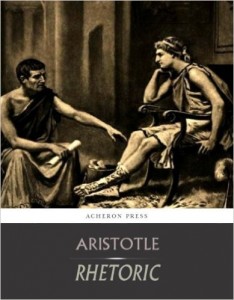 Aristotle for one, Rhetoric, 3.11. I quote the passage at some length because Aristotle includes in his discussion a particular feature that we find in abundance throughout the Gospel of Mark — puns and other forms of wordplay .
Aristotle for one, Rhetoric, 3.11. I quote the passage at some length because Aristotle includes in his discussion a particular feature that we find in abundance throughout the Gospel of Mark — puns and other forms of wordplay .
It has already been mentioned that liveliness is got by using the proportional type of metaphor and being making (ie. making your hearers see things). We have still to explain what we mean by their ‘seeing things’, and what must be done to effect this. By ‘making them see things’ I mean using expressions that represent things as in a state of activity. Thus, to say that a good man is ‘four-square’ is certainly a metaphor; both the good man and the square are perfect; but the metaphor does not suggest activity. On the other hand, in the expression ‘with his vigour in full bloom’ there is a notion of activity; and so in ‘But you must roam as free as a sacred victim’; and in
“Thereas up sprang the Hellenes to their feet, “
where ‘up sprang’ gives us activity as well as metaphor, for it at once suggests swiftness. So with Homer’s common practice of giving metaphorical life to lifeless things: all such passages are distinguished by the effect of activity they convey. Thus,
“Downward anon to the valley rebounded the boulder remorseless; and “
“The (bitter) arrow flew; “
and
“Flying on eagerly; and “
Stuck in the earth, still panting to feed on the flesh of the heroes; and
“And the point of the spear in its fury drove
“full through his breastbone. “
In all these examples the things have the effect of being active because they are made into living beings; shameless behaviour and fury and so on are all forms of activity. And the poet has attached these ideas to the things by means of proportional metaphors: as the stone is to Sisyphus, so is the shameless man to his victim. In his famous similes, too, he treats inanimate things in the same way:
“Curving and crested with white, host following
“host without ceasing. “
Here he represents everything as moving and living; and activity is movement.
Metaphors must be drawn, as has been said already, from things that are related to the original thing, and yet not obviously so related-just as in philosophy also an acute mind will perceive resemblances even in things far apart. Thus Archytas said that an arbitrator and an altar were the same, since the injured fly to both for refuge. Or you might say that an anchor and an overhead hook were the same, since both are in a way the same, only the one secures things from below and the other from above. And to speak of states as ‘levelled’ is to identify two widely different things, the equality of a physical surface and the equality of political powers.
Liveliness is specially conveyed by metaphor, and by the further power of surprising the hearer; because the hearer expected something different, his acquisition of the new idea impresses him all the more. His mind seems to say, ‘Yes, to be sure; I never thought of that’. The liveliness of epigrammatic remarks is due to the meaning not being just what the words say: as in the saying of Stesichorus that ‘the cicalas will chirp to themselves on the ground’. Well-constructed riddles are attractive for the same reason; a new idea is conveyed, and there is metaphorical expression. So with the ‘novelties’ of Theodorus. In these the thought is startling, and, as Theodorus puts it, does not fit in with the ideas you already have. They are like the burlesque words that one finds in the comic writers. The effect is produced even by jokes depending upon changes of the letters of a word; this too is a surprise. You find this in verse as well as in prose. The word which comes is not what the hearer imagined: thus
“Onward he came, and his feet were shod with his-chilblains, “
where one imagined the word would be ‘sandals’. But the point should be clear the moment the words are uttered. . . . This is also true of such lively remarks as the one to the effect that to the Athenians their empire (arche) of the sea was not the beginning (arche) of their troubles, since they gained by it. Or the opposite one of Isocrates, that their empire (arche) was the beginning (arche) of their troubles. Either way, the speaker says something unexpected, the soundness of which is thereupon recognized. There would be nothing clever in saying ’empire is empire’. Isocrates means more than that, and uses the word with a new meaning. So too with the former saying, which denies that arche in one sense was arche in another sense. . . .
. . . . The more a saying has these qualities, the livelier it appears: if, for instance, its wording is metaphorical, metaphorical in the right way, antithetical, and balanced, and at the same time it gives an idea of activity.
Successful similes also, as has been said above, are in a sense metaphors, since they always involve two relations like the proportional metaphor. . . .
Then there is Cicero’s On the Orator (De Oratore), 3.40
Here almost every thing is expressed in words metaphorically adapted from something similar, that the description may be heightened. . . .
but, even in the greatest abundance of proper words, men are much more charmed with such as are uncommon, if they are used metaphorically with judgment. This happens, I imagine, either because it is some manifestation of wit to jump over such expressions as lie before you, and catch at others from a greater distance ; or be cause he who listens is led another way in thought, and yet does not wander from the subject, which is a very great pleasure ; or because a subject, and entire comparison, is dispatched in a single word ; or because every metaphor that is adopted with judgment, is directed immediately to our senses, and principally to the sense of sight, which is the keenest of them all. For such expressions as the odor of urbanity, the softness of humanity, the murmur of the sea, and sweetness of
language, are derived from the other senses ; but those which relate to the sight are much more striking, for they place almost in the eye of the mind such objects as we can not see and discern by the natural eyes.
Continue reading “Crucifixion Portrayed Before the Very Eyes of Galatians”


It seems hardly a month passes without somebody on Vridar bringing up Galatians 1:19, in which Paul refers to James as the “brother of the Lord.” Recently I ran a search for the phrase here, and after reading each post, it struck me how much time we’ve spent wondering what it means and so little time asking why it’s there in the first place.
What is the function of “brother of the Lord” in that sentence? Notice we can ask this question without raising the hackles of either the mythicists or historicists. Forget what it might mean. Forget (at least for the moment) who you think wrote it. It could have been Paul. It might have been the very first reader who added it as a marginal note or a scribe at some point along the transmission path. Instead, let’s ask why.
It would appear on the surface, at least, that “brother of the Lord” is a kind of descriptor. In other words, it tells us which James Paul met. Since 1:19 is the first time Paul mentions James in Galatians, perhaps that’s why we see it here. But then why didn’t Paul do the same thing in 1 Corinthians, which he probably wrote in the same year?
1 Cor 15:7 Then he appeared to James, then to all the apostles. (ESV)
One could argue that since he’d already referred to “the twelve” in 1 Cor 15:5, Paul didn’t need to explain which James he meant. In fact, he may have been reciting an early resurrection credo, and as such everyone would already have known who all the characters were — Cephas, the Twelve, the 500 brothers. They needed no introduction, so to speak.
On the other hand, one could argue that in Galatians Paul could only have meant one James. He was, after all, starting an extended tirade against the Jerusalem pillars, and his Galatian audience would surely have known who he meant. He probably told that story all the time — “Then James sends a bunch of his thugs up to Antioch, and old Cephas is like, ‘I’m not eating with those Gentiles. No way!'” Continue reading “The Function of “Brother of the Lord” in Galatians 1:19″

Whenever I hear the word “myrrh,” I can’t help but remember a comedy bit by Cathy Ladman (note: you may not be able to view that video in your region; if so, see http://jokes.cc.com/funny-god/9xm00l/cathy-ladman–gold–frankincense-and-myrrh). She tells us:
My best friend is Lutheran and she told me when Jesus was born, the Three Wise Men visited him and they brought as gifts: gold, frankincense and myrrh. Myrrh? To a baby shower?
So in my head, “myrrh” is always pronounced with a New York/Brooklyn accent.
But seriously, why did those mysterious men from the East bring those three particular gifts to Bethlehem?
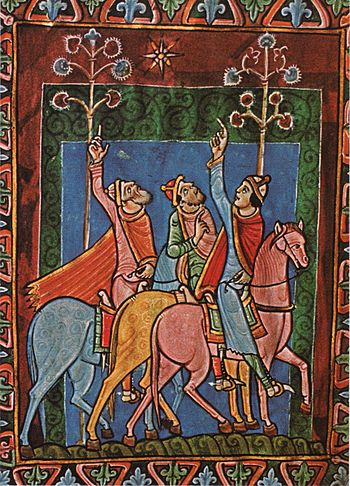
In general, modern scholars have explained Matthew’s choice of the three gifts as simply items fit for a VIP. We shouldn’t worry too much, they argue, over their specificity. For example, in his commentary on Matthew, John Nolland says:
No particular symbolism should be attributed to the individual items making up the present from the Magi: as expensive luxury items the gifts befit the dignity of the role for which this child is born. An allusion to Is. 60:6 is possible: Israel being glorified in the person of the messiah by the wealth of the nations. (Nolland, 2005, p. 117)
According to this view, Matthew intended no deeper meaning. And yet we still have that nagging suspicion that something more is going on here. After all, as Nolland himself notes more than a thousand pages later, Mark wrote that Jesus, while hanging on the cross, had refused wine mixed with myrrh. But Matthew changes the story so that the wine contains gall instead of myrrh, and rather than simply refusing it, Jesus tastes the mixture before turning it down. Did Matthew consciously move the myrrh from Jesus’ death scene to his nativity?
Margaret Barker, in Christmas, The Original Story, reminds us that myrrh was originally a vital component in the oil of the temple, however: Continue reading “Why Did Matthew’s Nativity Story Have References to Gold, Frankincense, and Myrrh?”

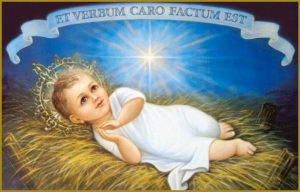 Dontcha love the patronizing tone of the header? “Five Reasons Why Mythicism is Disappointing”. Our author was SO hoping for such good things to emerge from mythicism, now, wasn’t he. How mythicism has disappointed him!
Dontcha love the patronizing tone of the header? “Five Reasons Why Mythicism is Disappointing”. Our author was SO hoping for such good things to emerge from mythicism, now, wasn’t he. How mythicism has disappointed him!
The post is a response to Valerie Tarico’s Here are 5 reasons to suspect Jesus never existed
Our disappointed scholar explains why Valerie only has 5 “really bad reasons” for even raising the question of the historical existence of Jesus.
1) She says that there are no secular sources about Jesus, neglecting to mention that the notion of secularism did not exist in that time . . .
In fact Valerie Tarico explains exactly what she means by “secular sources” by quoting 171 words from the historicist scholar Bart Ehrman.
“What sorts of things do pagan authors from the time of Jesus have to say about him? Nothing. As odd as it may seem, there is no mention of Jesus at all by any of his pagan contemporaries. There are no birth records, no trial transcripts, no death certificates; there are no expressions of interest, no heated slanders, no passing references – nothing. In fact, if we broaden our field of concern to the years after his death – even if we include the entire first century of the Common Era – there is not so much as a solitary reference to Jesus in any non-Christian, non-Jewish source of any kind. I should stress that we do have a large number of documents from the time – the writings of poets, philosophers, historians, scientists, and government officials, for example, not to mention the large collection of surviving inscriptions on stone and private letters and legal documents on papyrus. In none of this vast array of surviving writings is Jesus’ name ever so much as mentioned.”
Really bad reason #2:
2) She points out that things like the virgin birth only appear late, as though that is evidence against the historical value of our earliest sources.
That’s odd. Valerie’s original point was “details of Jesus’ life”, “the most basic biographical facts and teachings of Jesus”, the twelve apostles of disciples of Jesus, the ministry and miracles of Jesus — and oh yes, the virgin birth, too. Continue reading ““Five Reasons Why Mythicism is Disappointing””


Recently, I happened to notice a post on James McGrath’s site concerning a paper by Tom Thatcher about Jesus as a healer and a “controversialist.” As I take it, that term describes a figure who is no mere contrarian, but rather one who makes controversial statements or engages in controversial actions to stimulate debate or to educate and elucidate.
Thatcher presented his paper, which apparently isn’t yet available to the public, at the Society of Biblical Research’s 2015 Annual Meeting in Atlanta. His session, entitled “Jesus as Controversialist: Media-Critical Perspectives on the Historicity of the Johannine Sabbath Controversies,” bears the following abstract:
Apart from scattered sayings with clear parallels in other texts, it remains the case that the Johannine discourses are almost categorically disregarded as useful sources for the message of Jesus. Consistent with this approach, the dialogues of Jesus in John 5–10, which include some of the most significant Christological statements in the Gospel, are generally discounted whole as reflections of the Johannine imagination. The present paper will utilize insights drawn from media-criticism to propose a more holistic approach that seeks to identify broad patterns in John’s presentation that reflect widely-accepted themes in the message and program of the historical Jesus. Close analysis reveals that the discourses in John 5-10 are prompted by specific acts of protest by Jesus (the two Sabbath healings) that are directed toward the brokers of the Jerusalem great tradition. Against the establishment claim that he is a “sinner,” Jesus contends that his widely-documented activity as a healer would be impossible were it not sanctioned by God: If God objected to healing on Sabbath, then how could Jesus do so? One may reasonably conclude that the more elaborate theological statements in this central section of the Gospel are in fact grounded in three widely accepted conclusions: that the historical Jesus was a healer; that he challenged conventional views of Sabbath; and, that he openly opposed the Judean religious establishment. (Thatcher, 2015, emphasis mine)
Continue reading “Metonymy, Messianism, and Historicity in the New Testament”